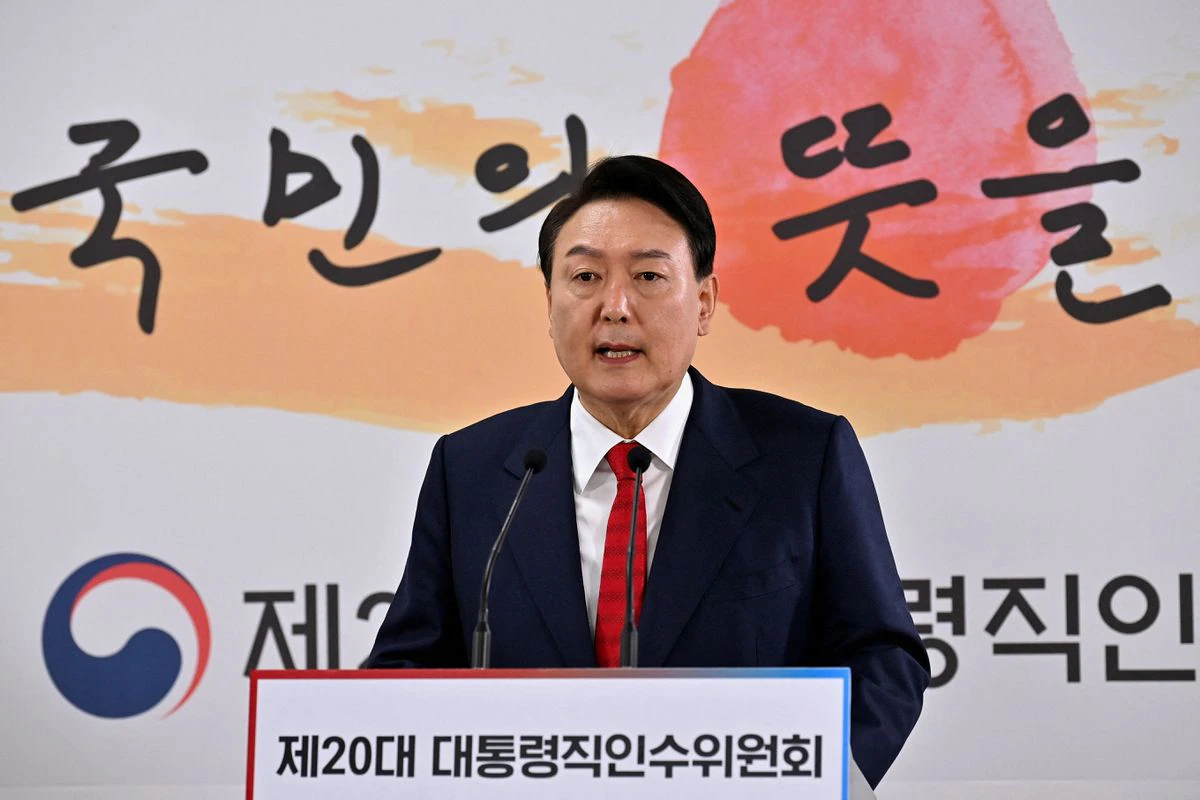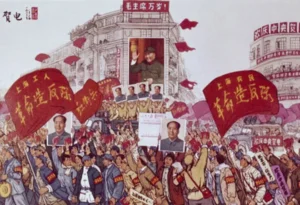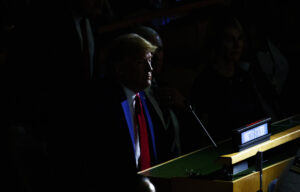South Korea’s President Yoon Says Goodbye to the Blue House and Hello to Controversy
After his election as the new President of South Korea in May, Yoon Suk-yeol hastily implemented one of his key promises: to relocate South Korea’s presidential office from Chung Wa Dae (Blue House) to a Defense Ministry Complex in Yongsan, an underdeveloped neighborhood in Seoul best known for its stationing of the United States military forces.

Image Credit: Jung Yeon-je
After his election as the new President of South Korea in May, Yoon Suk-Yeol hastily implemented one of his key promises: to relocate South Korea’s presidential office from Chung Wa Dae (Blue House) to a Defense Ministry Complex in Yongsan, an underdeveloped neighborhood in Seoul best known for its stationing of the United States military forces. Cheong Wa Dae, located between Mount Bukak and the Gyeongbok Palace–the main palace of the Joseon Dynasty (1392-1910)–has served as the nation’s presidential compound since the establishment of the South Korean government in 1948. Yoon’s initiative breaks this deeply-rooted historical tradition, yet he has been quite adamant in his stance on doing so. In fact, previous presidents have also invoked similar movement plans but abandoned them as they perceived them to be infeasible with more pressing matters at stake. So why did President Yoon think it imperative to adhere to such a decision?
Mr. Yoon cited two main reasons: to deviate from the legacy of imperial presidency and for security and logistical purposes. Yoon has always emphasized the idea of an open presidency, promising citizens to be a “President of communication.” The geographically secluded nature of the Blue House conflicts with this very idea, hence his strong emphasis to shift to a more exposed setting. The whole initiative derives from Yoon’s principle of “space rules consciousness,” the very idea that a person is dominated by their surrounding environment. But does it really? Professor Eun-Joo Chang of Youngsan University published an article on SisaIN titled “An Imperial President Results from Institution and Not Space,” arguing that imperial presidency, the very notion of a secluded leadership with authoritarian and arbitrary tendencies, is not entirely tied to space. What matters is the institution. It is the president’s system, policies, and behavior that constitute and characterize the presidency, not the mere alteration or transformation of space.
Professor Chang went on to criticize the President-elect for self-contradicting himself. While emphasizing communication with the people, Yoon abandoned the process of collecting and reflecting on the public’s opinion when deciding and executing his relocation plans. In response, Yong-Hyun Kim, the deputy director of the “Blue House Relocation Task Force” apologized to the citizens and explained that President Yoon had always emphasized the necessity of starting at the new presidential office after his inauguration on May 10, and the ensuing time constraints meant that the process had to be expedited. But, is there a point of pursuing a new era of open communication, when the process towards that abandons the very essence of it? If the benefits of the end result surmount the sacrifices of the means, then yes, perhaps. As a matter of fact, what Yoon is pushing for, despite its controversy, is under his legal prerogative. But unless the still-abstract notion of “communication” is applied in more pragmatic terms, he will not be able to evade criticism entirely.
The President also believes relocation will enhance national security and logistics, an idea that many have dissented to. His proponents cited the presence of a military bunker in the Defense Ministry building as a factor that will in fact enhance security in the presidential office. Yong-Hyun Kim stated that the Defense Ministry is better equipped with security capabilities than the Blue House, downplaying security concerns related to relocation. However, many experts claim the move will be detrimental to national security and interfere with logistics. Contrary to the structure of the Blue House, the presidential office and residence are separated in the new compound; the presidential office is the former Ministry of Defense building located in Itaewon-ro, Yongsan, while the presidential residence is the former residence for the Ministry for Foreign Affairs located in Hannam-dong, Yongsan. This means that the President will have to commute to work, and while the length of the travel is short (5-10 minutes), the presidential convoy will have to interfere with civic transportation, causing delays, and inconveniences. But most importantly, commuting exposes the President more frequently to the public, and this can potentially have dangerous implications. The Blue House has offered previous chief executives a safe haven, by making it difficult for outsiders to track their location. This extra layer of protection is unavailable in the new complex, meaning that the very idea of commuting is not only novel but vulnerable.
All of this does not even touch upon the financial costs of relocation. President Yoon had announced on March 20th that relocation fees will amount to 49.6 billion won, but this is a preliminary estimate. Just a day later, the presidential transition committee stated that 120 billion won will be needed to build the Joint Chiefs of Staff building, a procedure stemming from the relocation project. The initial value proposed by Yoon is a mere movement fee, which does not consider the costs of the entire relocation process and its economic ramifications. Moving the office of the President, one who serves as the Commander-in-Chief in South Korea, is the equivalent of transferring the entire “heart” of the Korean military. This is a grand project that entails shifts across multiple levels, and the task of estimating its cost is an almost impossible one.
President Yoon moved into his new Yongsan Complex with his inauguration in May. Several months into his presidency, the relocation decision has not been serving him well so far. Yoon’s plan to relocate was already met with acrimonious criticism early this year, and that sentiment has only been increasing up to this point. The opposition party had vehemently opposed the movement plan even before the inauguration. In March, the then-incumbent and outgoing opposition party, the Democratic Party of Korea, uploaded a poster on Facebook titled, “Relocating from Chung Wa Dae to Yongsan, why such a haste? Discard the movement plan and take care of public welfare instead!” stating that relocation increases national security concerns and is a waste of the government budget. The initiative had not been well received by the public either. According to the results of a survey released in March by Mediatomato, 58.1 percent of the respondents said that the presidential office should stay where it is, 8.7 percent responded that they have no opinion, and 33.1 percent responded that they agree with the relocation.
Controversies simply do not seem to cease. A wrench was thrown in earlier plans to move into the Gwanghwamun area office building when logistical problems prevented the move, causing a public stir. Even after moving into the Yongsan compound, Yoon was not able to reconcile public opinion due to several incidents delineated in the SisaIN article “What if the President Had Just Stayed at Chung Wa Dae…” by managing editor Hyungseok Cha. Many were left to question whether the move was necessary, in turn negatively impacting President Yoon’s already low approval ratings. For instance, rumors arose that Yoon signed a contract with a construction company with which he had personal ties. The public was skeptical of Yoon’s response to flood damage in August that led to multiple casualties, criticizing his role as a “control tower” and questioning whether he would have responded more efficiently with the traditional facilities of the Blue House. Facing public backlash after promulgating an 87.7 billion won construction of a new reception hall, he was forced to withdraw the plan, which the article describes as a “comedy.” Had he not relocated in the first place, he would not have had to have dealt with all these criticisms, and instead could have put his energy to matters deserving more attention.
At this point, many are questioning whether this ongoing project is even worth it. Is there a sufficient, justifiable cause for this initiative? Is it perhaps forcibly undertaken? These questions are debatable, but certain Koreans just don’t seem to buy Yoon’s idea. In fact, rumors have spread that the President heeded to shamanistic advice in making his decision to relocate. The mere idea of it is an abomination to South Korean citizens who still suffer from the trauma of ex-President Park’s involvement with a shaman advisor in deciding national affairs, making her the first President in South Korea to be impeached. Geomancy, which is the divination by means of geographic and earthly figures, is prevalent in East Asian culture. It often plays an important role in one’s decision of domiciles and business sites. Some people have associated the poor ending of recent presidencies with geomantic factors of the Blue House and believe them to be the main driving factors of Yoon’s decision to move out of it. Although none of this discourse has been officially admitted, the country’s history of shamanism and geomancy makes the argument appealing and sensible to a prominent group of people. In fact, an interview with first lady Kim Keon-hee revealed by Straight, an investigative journalism program of the Munhwa Broadcasting Company (MBC), strengthened such claims; a portion of the interview revealed Kim saying that she likes discussing life with gurus, a response that was received with much suspicion. While it is hard to make broad conclusions solely from that interview, it does help us understand the concern of the Korean people.
But putting all this aside, it is indeed too early to judge whether the relocation will be a good decision in the long run. Presumably, many would cherish the idea of President Yoon casually walking his dog Tori in Yongsan Park, appearing visible to the residents in the neighborhood area. The scene would not only be romantic but also an ideal manifestation of an open democracy. At the same time, South Korea is faced with more pressing issues at the moment. The main point of controversy is the timing in which this matter has been handled. Neighboring North Korea has become more aggressive, the economy is dwindling, and polarization is at its highest. One can argue that such problems will always persist, but the status quo of inter-Korean matters is noticeably intense at the moment. North Korea has a history of using Seoul’s presidential transition as an opportunity to showcase their force, and during this recent period, they carried out multiple nuclear experiments from March to now, heightening tensions.
Another point of controversy is the speed at which this matter has been handled; simply put, a few months does not cut it. The relocation project, which involves the movement of countless people, including both the presidential staff and military personnel, and construction procedures, is not a short-term project. Even the members of the Defense Ministry jokingly claimed that the relocation project was the first “large-scale speed battle since the Korean War.” In fact, Seoul Mayor Oh Se-hoon had heeded Yoon to spend between six months and a year developing the project. Why was Yoon in such a hurry? According to him, he had concerns that it would be harder to move out of the Blue House once he moved in and got started; he wanted to make sure he could move into the new compound with his inauguration. Although his point is valid, the impression that the whole process was a bit forced still lingers in the minds of the Korean people. In the end, we ask the question: did Yoon really have to rush his relocation project with more pressing matters at stake? Only time may reveal the true value of Yoon’s hasty decision.
Haan (James) is an undergraduate Senior student at NYU, and he studies Global Liberal Studies and Broadcast Journalism as majors and Politics as a minor. He is interested in international relations and foreign affairs, particularly considering the matter of Korean Unification. In his free time, Haan likes to play football (soccer) and watch the Premier League.




